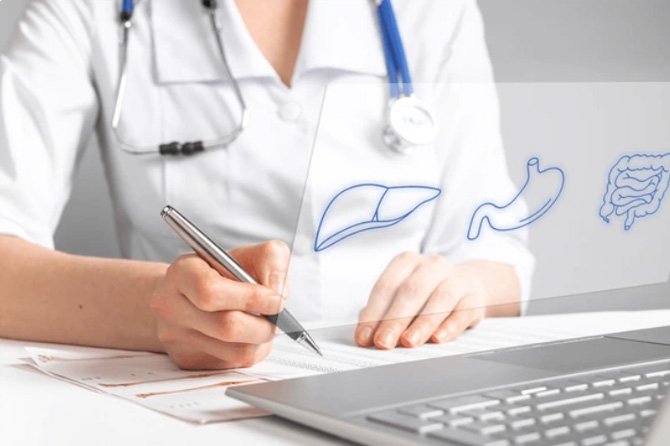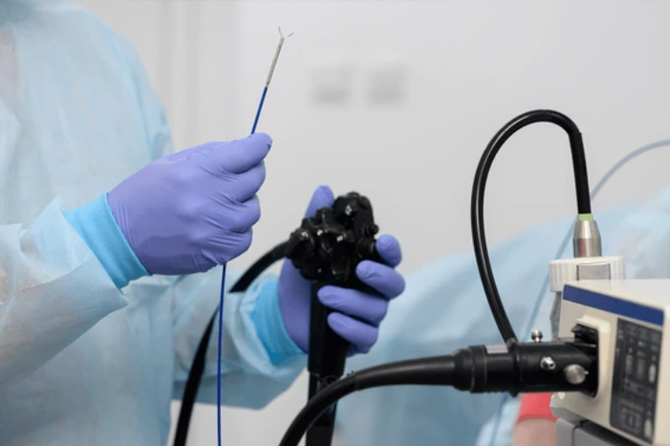A gastroscopy, also known as esophagogastroduodenoscopy (EGD), is a medical procedure that allows your doctor to examine the upper part of your gastrointestinal (GI) tract, including the esophagus, stomach, and the first part of the small intestine (duodenum). This is done using a flexible tube called a gastroscope, which is equipped with a light and camera to provide detailed images of the lining of these organs. Once sedated, the gastroscope is guided through the mouth and gently into the esophagus, stomach and small intestine.
- Preparation: You will receive specific instructions on how to prepare for the procedure, typically including fasting for several hours beforehand.
- Sedation: Before the procedure begins, you will be given a sedative to ensure your comfort and relaxation. This is provided by the anesthesia-physician in the room.
- The Procedure: The doctor will gently insert the gastroscope through your mouth, into your esophagus, and through the stomach into the top of the small intestine. Depending on the reason for testing, biopsies can be taken during the gastroscopy of any visible abnormality in addition to h pylori, intestinal metaplasia, Barretts esophagus, and Celiac disease. The procedure usually takes less than 15 minutes.
- Recovery: After the procedure, you will be monitored until the sedation wears off. It’s normal to feel a bit groggy, and you may have a sore throat for a short time. Most patients can return to normal activities within a day, although you will need someone to drive you home due to the sedation, and you cannot drive for the rest of the day.



